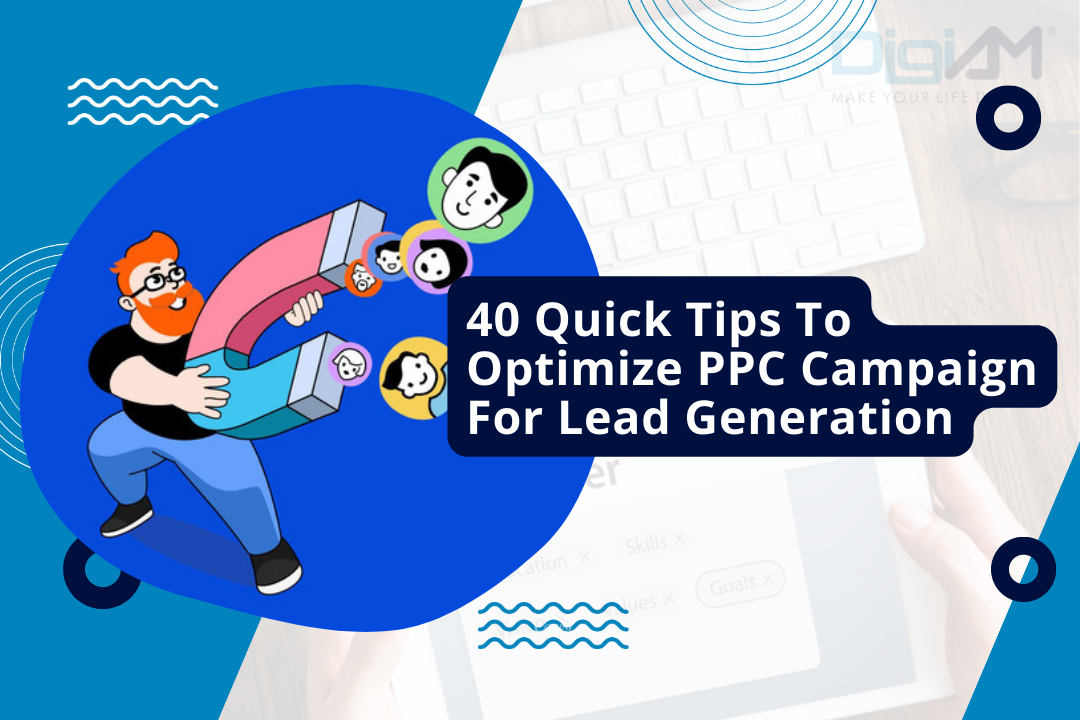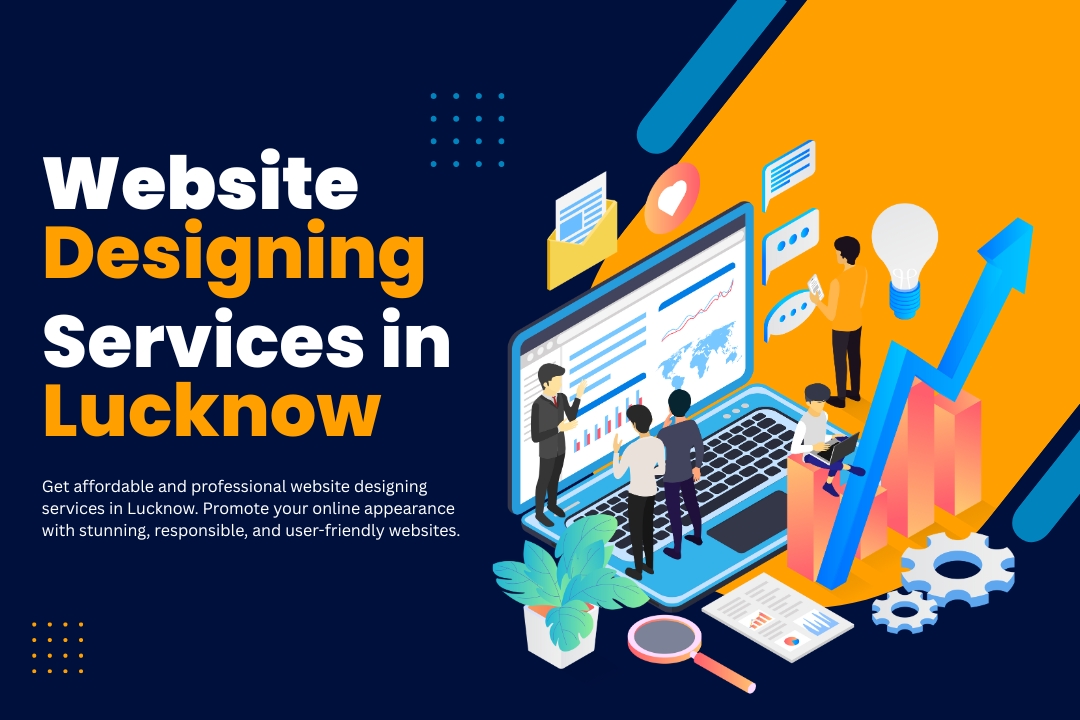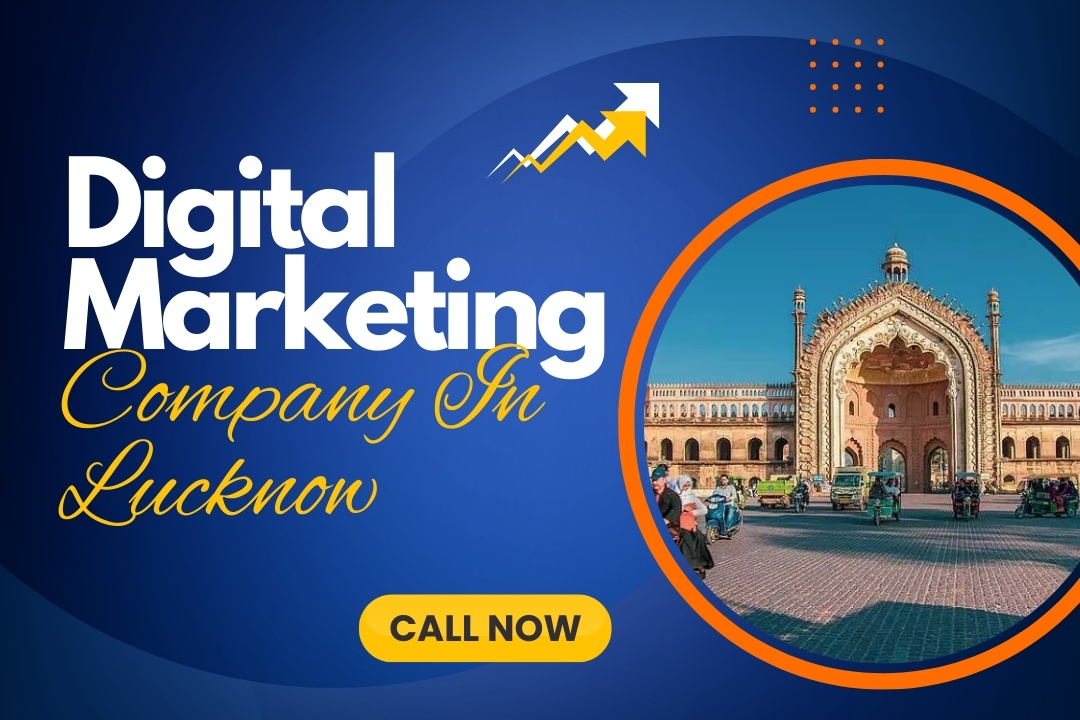40 Quick Tips To Optimize PPC Campaign For Lead Generation

PPC campaign stands for an online advertising campaign that uses the pay-per-click (PPC) model. It is also known as cost per click where advertisers pay publishers when users click their ads. PPC campaign is most commonly used in search engines such as Google Ads and on social media platforms like: Facebook. It helps to advertise the product and service and can drive traffic to a website. On the other hand, SEO can take time to show results.
This advertising also includes display advertising (typically, serving banner ads) and remarketing. PPC campaign advertising is a very cost-effective way to drive traffic to your website and grow your business. It comes in different shapes and sizes (literally) and can be made up of text, images, videos, or a combination. PPC campaign helps marketers to target specific demographics, interests, and locations to reach the right audience. PPC campaign marketing is a very critical task for any business. Without PPC campaign advertising, a business can neither grow nor increase its value in the market.
Some good tips for PPC Campaigns for lead generation with which leads can be generated for any business:
1. Identify Your Target Audience:
The first step of a PPC campaign for lead generation is to understand who are your target audience. Identifying your target audience will help you create your ad PPC campaign and be more likely to get leads.
2. Right Keyword Selection:
If you want to reach your target audience and goal of your PPC campaign for lead generation then you need to use relevant keywords in your ad PPC campaign. It will precisely reflect the product you offer and help you increase the likelihood that the audience will click on your ad.
3. Landing Pages:
You need to direct your PPC campaign ad traffic to a landing page that is optimized for lead generation. This page can also include the form for visitors to fill out to become a lead and should understandably describe the benefits of your product and service.
4. Test and Optimize your PPC campaign:
You need to test and optimize your ad PPC campaign for lead generation regularly to see what is working and what isn’t. Make adjustments as needed to improve the performance of your PPC campaign and increase the number of leads generated.
5. Employ Retargeting:
Use retargeting to reach users who have already interacted with your website or ad PPC campaign for lead generation. This can help you increase conversions by showing targeted PPC campaign ads to users who have already expressed an interest in your products or services.
6. Ad Extensions:
Ad extensions can help you improve the visibility and click-through rate of your PPC campaign ads for lead generation. Through ad extensions, you can come up with more information for the potential audience and make it simple for them to reach you.
7. Use of Negative Keywords:
Using a negative keyword means using a specific word to prevent your ads of PPC campaign for lead generation from showing to people who are unlikely to convert into leads. It will help you enhance the relevance of your PPC Campaign ads and reduce your cost-per-click.
8. Focus on Building a Strong Brand Image:
You must focus on building a strong brand image. For this, you can develop a comprehensive brand style guide and create high-quality PPC Campaign ads for lead generation to improve your ad rank and visibility.
9. Use pop-ups:
You can also use pop-ups as they appear on the screen to focus the user’s attention. You can use different types of popup triggers to show your audience. It yields a high success rate.
10. Section Your Campaigns:
To get the qualified leads you need to segment your PPC campaign for lead generation. This segmentation will be based on different criteria like geographic location, product type, or target audience. It will allow you to tailor your PPC Campaign ad and targeting to specific users and improve the performance of your PPC campaign.
11. Stay up-to-date with the trend:
If you want to target a relevant audience through your PPC campaign ad for lead generation, you must stay up-to-date with the latest trends. For this, you can subscribe email newsletter, industry news site, online chat, and marketing podcast.
12. Conduct Referral Program:
Referral programs will help you to get the potential audience. You can offer referral programs that reward existing customers for referring new ones. Through this, you can encourage users to convert into leads. It will help increase conversions and make your PPC campaign for lead generation more effective at generating leads.
13. Utilize Ad Scheduling:
Utilize PPC campaign Ad Scheduling means setting times to run your PPC Campaign ads based on when your target audience is most active online and looking for the product or service. It will maximize the chances of capturing their interest and generating leads during those peak hours.
14. Connect with Social Media:
Use social media platforms, such as Facebook and LinkedIn, to target potential leads. Through connecting with social media platforms you can drive traffic to your website. You can create a targeted ad PPC campaign for lead generation on this platform that is specifically designed to generate leads.
15. Provide a Demo:
To get the audience’s attention, you can give them a demo to experience your service or product for themselves. It can be offered on web pages or included in blog posts as a call to action. Demos are useful for leads but we should not rely only on demos.
16. Use Social Media Advertising:
You can use social media platforms such as Facebook, Instagram, and LinkedIn to target audiences based on their interests and behaviour. It will help you to promote your brand, engage with customers, and even incorporate user feedback into your marketing strategy.
17. Personalize Your Ad Messaging:
If you want to make your PPC Campaign ad for lead generation more effective then you must personalize your PPC campaign ad messaging. It will help you to resonate with your target and increase conversions. While personalizing your PPC Campaign ad messaging, you need to make sure to use language and imagery that appeals to your audience’s interests and needs.
18. Utilize A/B Testing:
Using A/B testing means comparing two different elements such as PPC campaign ad copy, images, and call-to-action buttons. It is an ongoing process that allows you to refine your lead generation tactics by testing new variations and identifying areas for improvement.
19. Influencer Partnership:
You can use influencer partnerships in your industry to reach a larger audience and generate more leads from them. Influencer marketing can help you reach potential leads who may not have found your brand otherwise and drive traffic to your website.
Read This: What are the Digital Marketing Strategies For Beginners
20. Deep Keyword Research:
If you want to optimize your PPC Campaign for lead generation, you must do high keyword research. You need to identify high-volume and relevant keywords with good conversion potential.
21. Utilize Retargeting Ads:
You can retarget your PPC Campaign ad for lead generation to reach the audiences who have previously visited a website. It is also known as remarketing. It is the most effective way for a long-term advertising strategy for online sellers.
22. Video and Visual Search in PPC Campaign:
You can use videos and visuals in your PPC Campaign ad for lead generation. Through video content, you can attract, more audience and traffic. It is a great way to build brand awareness and high engagement.
23. Bid Management:
Bid management is also very important for PPC Campaign ads for lead generation. You can use Google ads for smart bidding strategies such as Target CPA, and Target ROAS. It refers to the strategic process of setting and adjusting bids to maximize PPC Campaign ad visibility while optimizing your budget.
24. Creative optimization:
You must create a PPC Campaign ad that is related to your product or service & use audience data to create personalized PPC campaign ads to target different segments of your audience. You can also add countdown timers that will create urgency and drive more immediate conversions.
25. Budget Allocation:
Budget allocation is the process of distributing your overall PPC Campaign ad budget. You must allocate a larger portion of your budget to a PPC campaign and keywords that yield a high return on investment (ROI).
26. Continuous Testing:
To get the best results for your PPC Campaign for lead generation, you must regularly test your PPC campaign ads and landing pages. You can use A/B testing, and change ad elements. By doing this, you can track your conversion easily.
27. Utilize Programmatic Advertising:
Programmatic advertising helps to reach relevant audiences by using algorithms to automatically buy ad space, while a PPC Campaign for lead generation involves bidding on keywords. It will help to target audiences based on their interests and behaviours.
28. Continuous Optimization:
You must optimize your PPC Campaign for lead generation using real-time data analytics platforms. It is the process of making adjustments and improvements to your PPC campaign ad. The purpose of this is to maximize PPC Campaign performance, improve conversion rates, and optimize your budget allocation.
29. Competitor Research:
Competition analysis is the most important thing. Competitor research will help you analyze your competitor’s advertising strategies. You can determine your main competitors in the market based on your product/service and target audience.
30. Focus on Valuable Audience:
To optimize your PPC Campaign for lead generation, you must focus on a valuable audience. You can target only the relevant audience who are interested in that particular product or service. It will allow you to get more traffic on your website.
31. Optimize Landing Pages:
If you want to optimize the landing pages of a PPC campaign for lead generation, you need to improve the page’s design and content. You can create custom landing pages for different types of customers. You must optimize your landing page for effective PPC campaigns by ensuring it matches the messaging of your ads and is user-friendly.
32. Location targeting:
Location targeting in a PPC Campaign for lead generation is a key part of any ad campaign that can help improve ad performance and increase conversions. To target a location, you can use tools like Google Ads. It will help you to identify relevant locations based on the areas where you provide your services and your target audience profile.
33. Optimize CTAs:
To optimize your PPC campaign for lead generation, personalize CTAs to suit cold and warm visitors. You need to pay attention to using action-oriented language and aligning your CTA with the landing page content.
34. Seek Manual Bidding:
To optimize your PPC campaign for lead generation, you must try manual bidding. It will help you to better target to reach a relevant audience, enhance ROI, and achieve your PPC campaign goals. For this, you should have a strong understanding of your target audience and keyword research.
35. Use Microsoft Ads:
You can use the Microsoft ads technique to optimize your PPC campaign for lead generation. It will help your business to reach the target audience. For this, you can use the keyword planner and Ubersuggest for other keyword ideas. It will help you to extend your reach across multiple channels and target customers actively searching for products.
36. Track Your Conversion:
To optimize your PPC campaign for lead generation, you must track your conversion regularly. You must ensure that your conversion rate tracking is active and properly set up for your desired conversion goals. You can examine real-time tracking of your campaign and conversion rate.
37. Ongoing Analysis:
Ongoing analysis in a PPC campaign for lead generation means continuous monitoring and evaluating the performance of your PPC Campaign. You must check clicks, impressions, conversion rates, and cost per click regularly to identify areas for improvement.
38. Providing Value First In Your PPC Campaign:
To optimize your PPC campaign for lead generation, you must focus on delivering substantial and relevant information to customers through your ads. You should communicate the benefits and solutions of your product or service.
39. Target Prospective Customer:
To optimize your campaign, you must target prospective customers who are drawn to your ad’s focus and must receive value from your business. It will help you to achieve your business goals.
40. Target Returning Customer:
Targeting returning customers will provide you with a higher conversion rate. For this, you can use a customer list to create targeted campaign ads. You can use email and paid advertising to re-engage prospects who have already interacted with your site.
These mentioned tips will help you to optimize your campaign. It is a powerful marketing strategy for generating sales leads, boosting website traffic, and growing e-commerce sales. It helps to increase online brand awareness. Now these PPC campaign tips will help you to improve your PPC campaign strategy. Common mistakes can also be avoided.
Related
Related Blog
DigiAM provides a different kind of short-term job-oriented certified course / training program such as Digital Marketing, Search Engine Optimization, Google Ads Certification, Python, Graphic Designing, Video Editing, Web Designing & Development, Data Science and Data Analytics.



